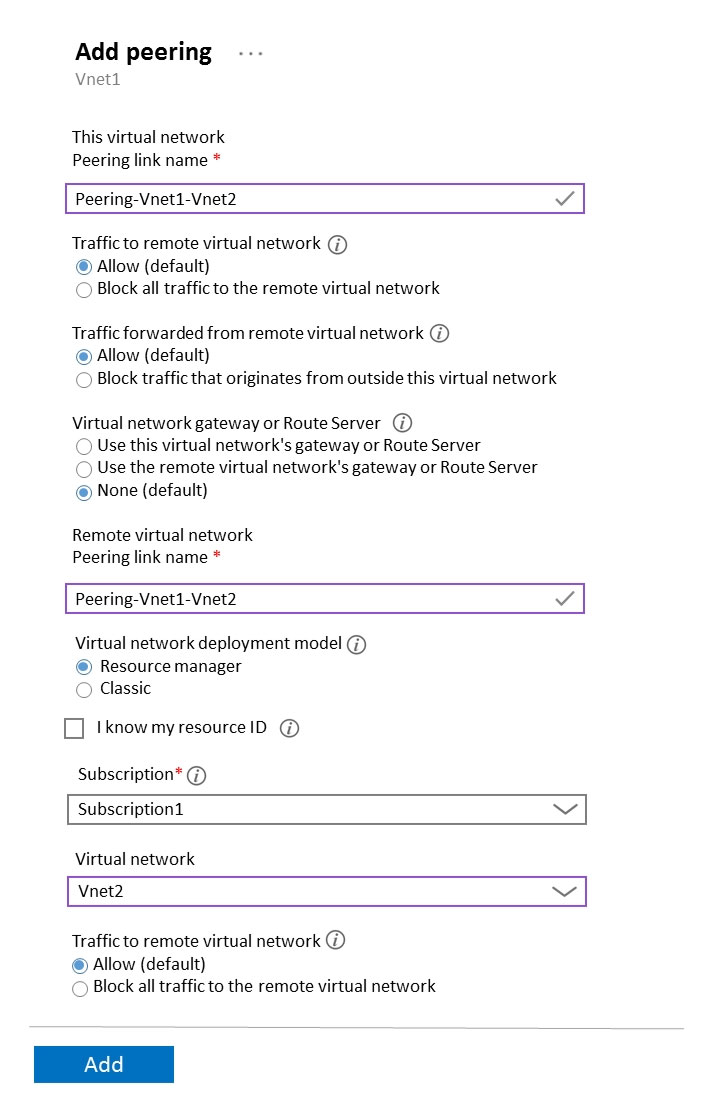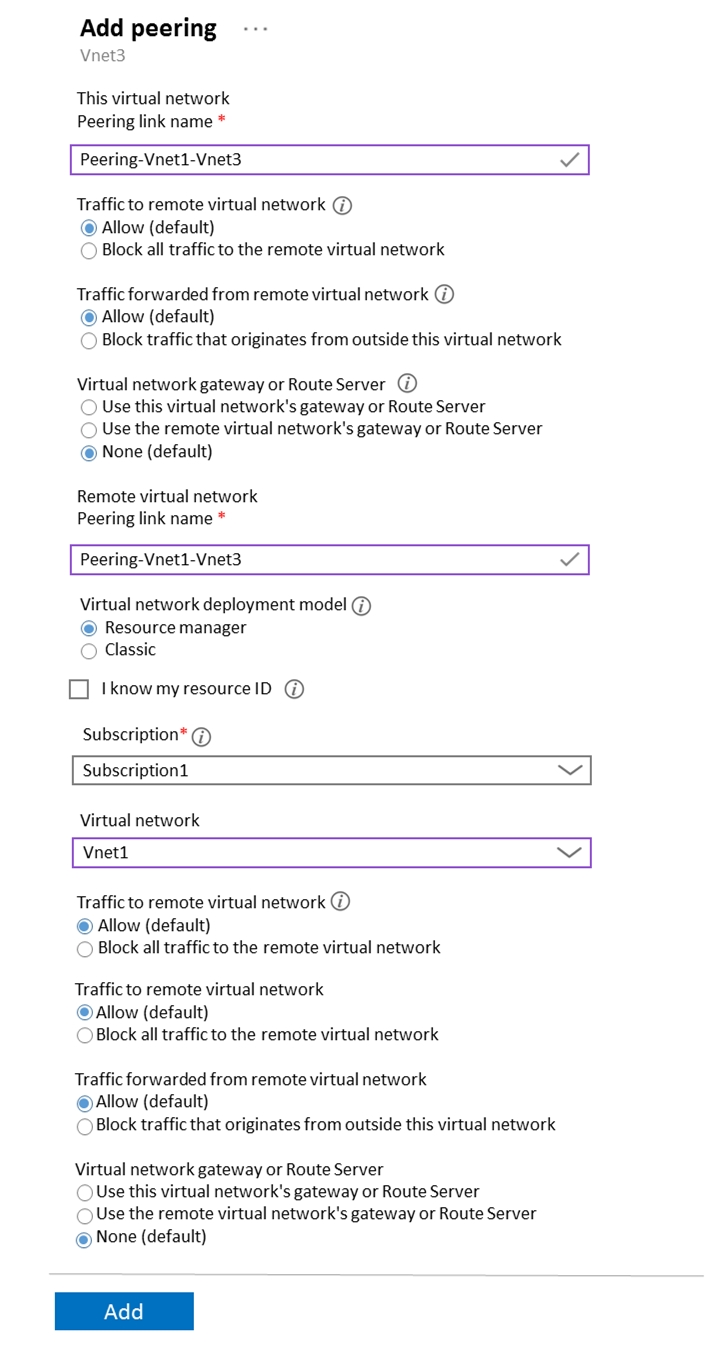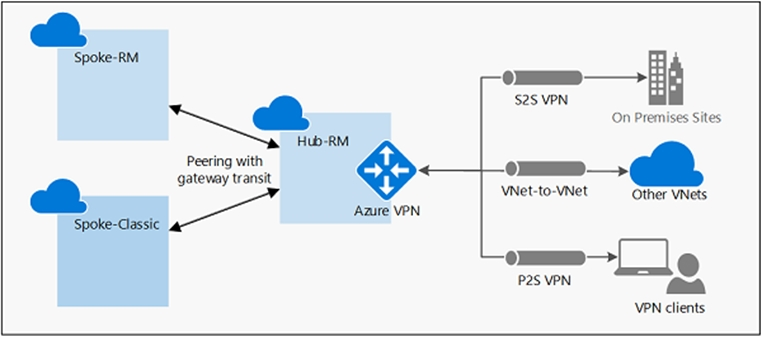

HOTSPOT -
You have the hybrid network shown in the Network Diagram exhibit.
You have a peering connection between Vnet1 and Vnet2 as shown in the Peering-Vnet1-Vnet2 exhibit.
You have a peering connection between Vnet1 and Vnet3 as shown in the Peering-Vnet1-Vnet3 exhibit.
For each of the following statements, select Yes if the statement is true. Otherwise, select No.
NOTE: Each correct selection is worth one point.
Hot Area:


amt2022
Highly Voted 2 years, 2 months agoPrutser2
Highly Voted 2 years, 6 months agovikrants31
1 year, 4 months agoc2e9cb4
1 year, 4 months agoEddie_Sli
Most Recent 9 months agoJastix
1 year, 1 month agomorito
9 months, 2 weeks agoEddie_Sli
9 months agoCiscoExam
1 year, 3 months agoMARTINOV
1 year, 6 months agobp_a_user
1 year, 7 months agobp_a_user
1 year, 7 months agovDreams
1 year, 8 months agoomgMerrick
2 years, 2 months agoTJ001
2 years, 3 months agozukako
2 years, 3 months agoDeepMoon
2 years, 7 months agoGetulioJr
2 years, 7 months agoDerekKey
2 years, 7 months ago